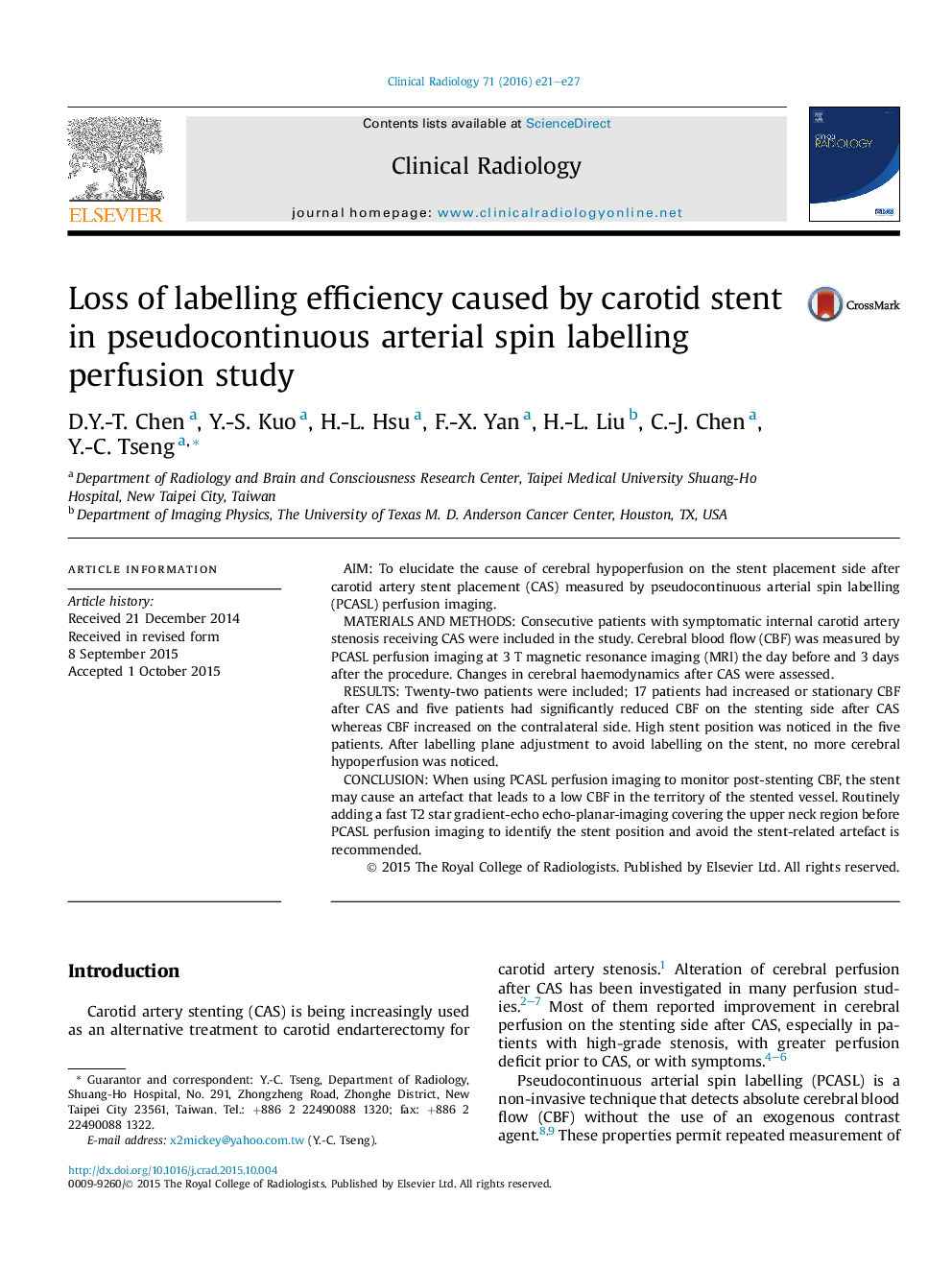| Article ID | Journal | Published Year | Pages | File Type |
|---|---|---|---|---|
| 3981441 | Clinical Radiology | 2016 | 7 Pages |
•When using PCASL to monitor post-stenting cerebral perfusion, the stent may cause a stent-related hypoperfusion artifact.•This should not be mistaken as acute carotid stent thrombosis which is a potential devastating complication after carotid stenting.•This artifact especially occurs in patients with high carotid bifurcation.•A T2 star gradient echo EPI covering the neck helps to identify the stent position and avoid the stent-related artifact.
AimTo elucidate the cause of cerebral hypoperfusion on the stent placement side after carotid artery stent placement (CAS) measured by pseudocontinuous arterial spin labelling (PCASL) perfusion imaging.Materials and methodsConsecutive patients with symptomatic internal carotid artery stenosis receiving CAS were included in the study. Cerebral blood flow (CBF) was measured by PCASL perfusion imaging at 3 T magnetic resonance imaging (MRI) the day before and 3 days after the procedure. Changes in cerebral haemodynamics after CAS were assessed.ResultsTwenty-two patients were included; 17 patients had increased or stationary CBF after CAS and five patients had significantly reduced CBF on the stenting side after CAS whereas CBF increased on the contralateral side. High stent position was noticed in the five patients. After labelling plane adjustment to avoid labelling on the stent, no more cerebral hypoperfusion was noticed.ConclusionWhen using PCASL perfusion imaging to monitor post-stenting CBF, the stent may cause an artefact that leads to a low CBF in the territory of the stented vessel. Routinely adding a fast T2 star gradient-echo echo-planar-imaging covering the upper neck region before PCASL perfusion imaging to identify the stent position and avoid the stent-related artefact is recommended.
